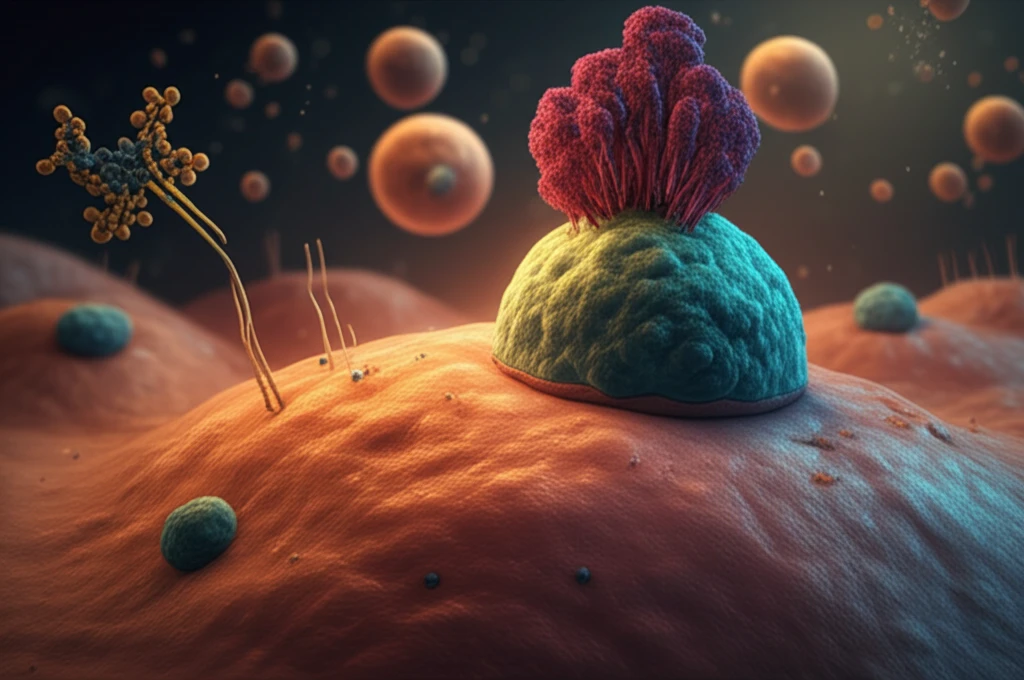
Unlocking the Secrets of iNKT Cells: How These Immune Cells Could Revolutionize Immunotherapy
"A Deep Dive into the Activation Mechanisms of Invariant Natural Killer T Cells and Their Potential for Immunomodulation"
The human immune system is a marvel of biological engineering, a complex network of cells and processes working in harmony to defend the body against a constant barrage of threats. Among the key players in this intricate defense system are invariant natural killer T (iNKT) cells, a unique subset of T lymphocytes that bridge the gap between innate and adaptive immunity. These cells, while not as widely known as their T cell and natural killer (NK) cell counterparts, hold immense promise for the future of immunotherapy.
iNKT cells possess the remarkable ability to recognize lipid antigens presented by the CD1d molecule, a non-polymorphic MHC class I-like molecule. This recognition mechanism sets them apart from conventional T cells, which primarily recognize peptide antigens presented by MHC molecules. The lipid antigens recognized by iNKT cells can be derived from various sources, including the body's own cells, bacteria, and synthetic compounds developed for clinical applications.
Despite significant advances in our understanding of iNKT cells, a comprehensive consensus on their precise activation mechanisms remains elusive. These cells exhibit a remarkable capacity to induce diverse polarization patterns, but deciphering the factors that govern these patterns has proven challenging. This article explores the intricate mechanisms that govern iNKT cell activation, examining the factors that influence their function and highlighting their immense potential as targets for immunomodulatory therapies.
How Do iNKT Cells Recognize Their Targets?

Unlike conventional T cells that recognize peptide antigens, iNKT cells are specialized to recognize lipid antigens presented by a molecule called CD1d. This is a key difference that allows iNKT cells to respond to a different set of threats and stimuli. These lipid antigens can originate from the body itself (endogenous), from external sources like bacteria (exogenous), or can even be synthetic molecules designed in the lab for specific therapeutic purposes.
- The Nature of the Lipid: What specific type of lipid is it?
- How it Gets Inside Cells: The process of internalization.
- How it's Presented: How the lipid is processed and presented by the CD1d molecule.
The Future of iNKT Cell Research
While much progress has been made, many questions remain regarding iNKT cell activation and function. Further research is needed to fully elucidate the complex interplay of factors that govern their activity and to translate this knowledge into effective immunotherapeutic strategies. By unlocking the full potential of iNKT cells, we can pave the way for novel treatments and prevention strategies for a wide range of diseases, improving human health and well-being.
